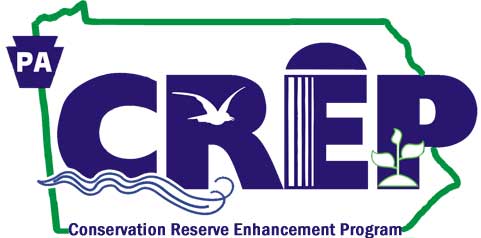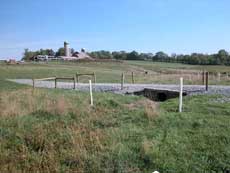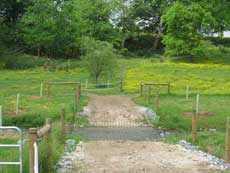CREP Enrollment Process
Step 1. Visit your local FSA Office.
Schedule an appointment at your local FSA Office to discuss CREP, and submit an offer, if you decide that CREP is right for you.
Step 2. FSA checks land eligibility (cropping history) and producer eligibility.
FSA begins the offer process and completes the CRP-2C offer worksheet with applicant, and submits the form and map to NRCS.
Step 3. NRCS (or a cooperating Technical Service Provider) performs a site visit.
NRCS/TSP will schedule a site visit with participant to discuss conservation goals, and gathers CREP practice suitability and eligibility information for FSA.
Step 4. FSA develops a preliminary CREP enrollment offer and notifies the CREP applicant.
FSA will determine eligibility for the CREP offer, calculate the soil rental rate (payment per acre) and cost share to install the practice along with any other incentive rates available. FSA will notify the applicant and explain the contract details.
Step 5. Potential CREP enrollee accepts or declines further interest in CREP.
Within 30 days of receiving the offer eligibility determination from FSA, the applicant must contact FSA to either accept or decline the offer. The decision is voluntary and involves no further communication if declined.
Step 6. CREP participant and NRCS/TSP develop a CREP Conservation Plan.
NRCS/TSP works closely with the CREP applicant to develop a site-specific conservation plan, including a detailed map which identifies the CREP Conservation Practice(s) to be installed on the site.
Step 7. FSA develops a CREP contract.
NRCS will provide a copy of the CREP Conservation Plan to FSA. FSA will make an appointment with the CREP applicant to complete all required paperwork, which includes CRP-1 contract signing. At this point, enrollment in CREP is formalized and the agreement is contractually binding.
Step 8. CREP Conservation Practice installment.
The CREP participant is responsible for installing CREP Conservation Practice(s), or independently using a CREP installation contractor (list available at FSA office), and then seeking reimbursement by reporting that the practice has been completed and submitting bills for total eligible costs to FSA for payment.
Step 9. CREP Conservation Practice maintenance during life of the contract.
The CREP participant is responsible for the required practice maintenance for the life of the CREP contract. Maintenance invlves on the ground evaluation including annual noxious weed control as needed and may involve replanting of required practice vegetation, such as, grasses, weeds and shrubs. Failure to maintain the practice may result in noncompliance, which may risk contract termination and return of all payments received.
Step 10. Continuing your CREP contract. In the last year of your contract, you may have the opportunity to re-enroll for another 10 – 15 year contract. It is important, not only for contract compliance, to keep your CREP practice maintained as originally planned. Refer to the Re-enrollment tab for specific details for each of the CREP/CRP practices.
See Reenrollment Information
|


